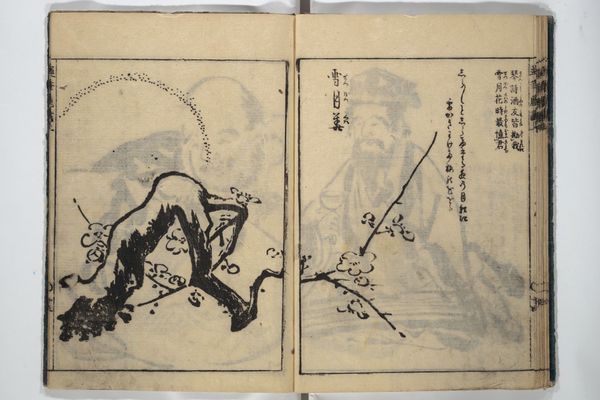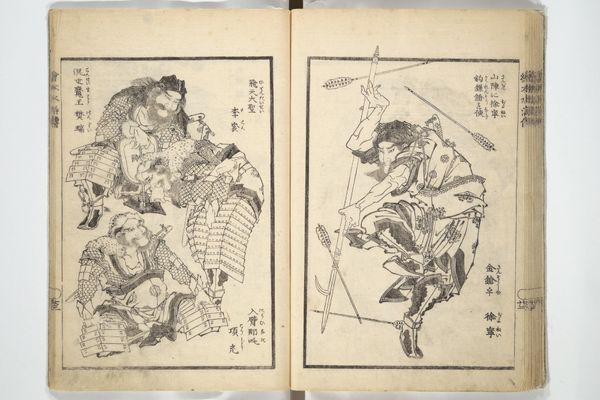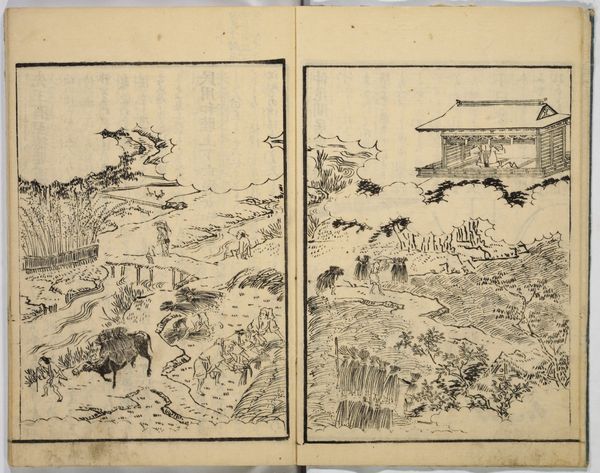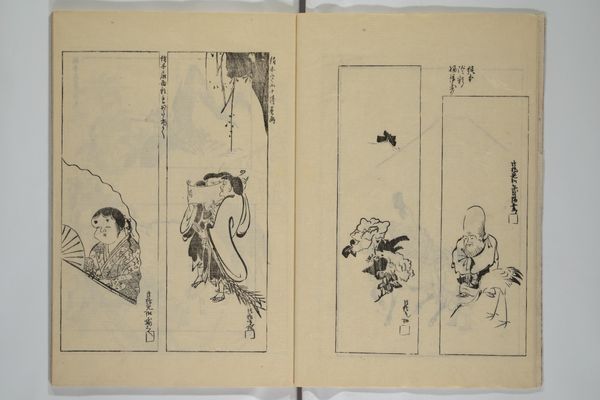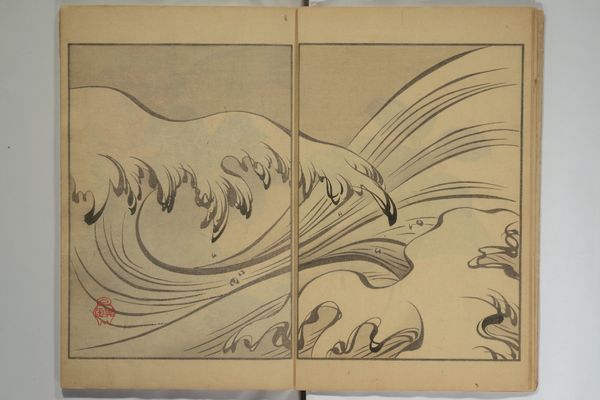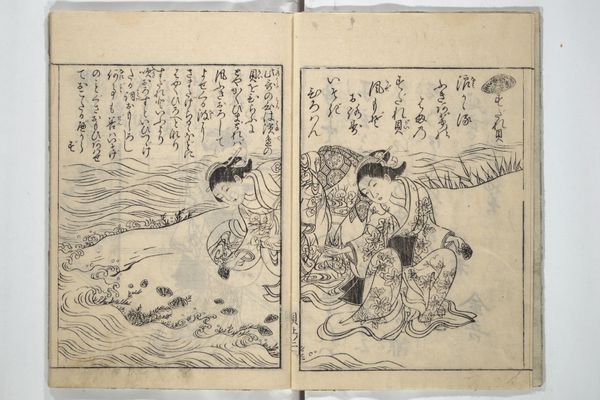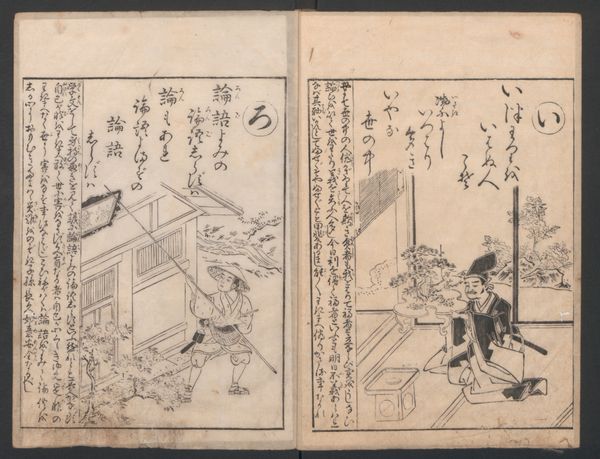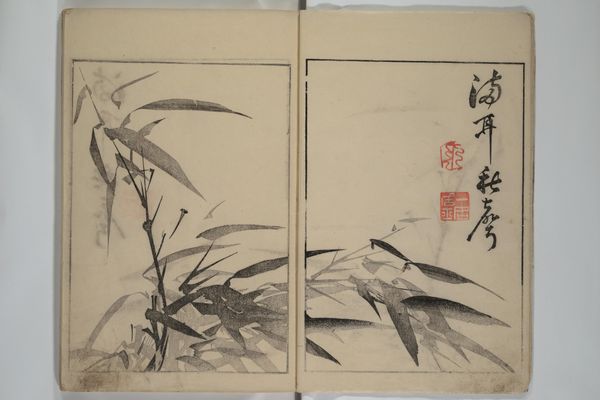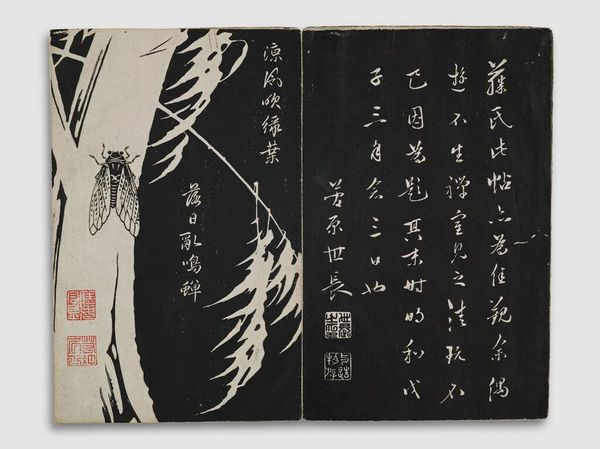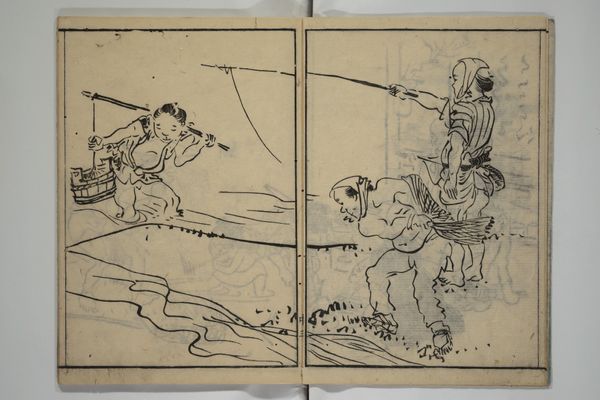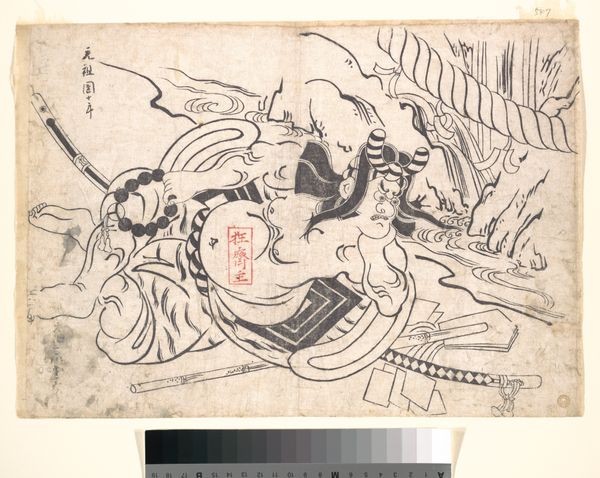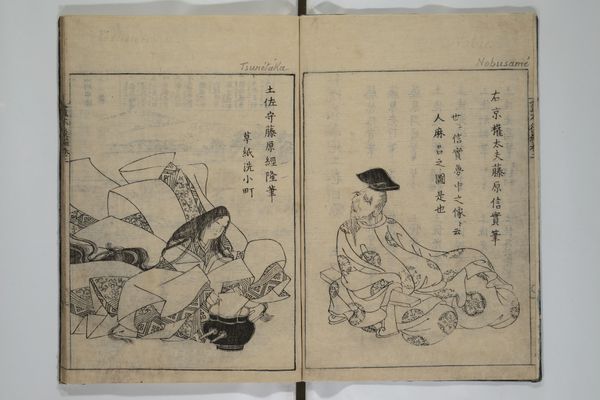
drawing, print, paper, ink, woodblock-print
#
drawing
# print
#
asian-art
#
sketch book
#
landscape
#
bird
#
ukiyo-e
#
paper
#
ink
#
woodblock-print
Dimensions: 10 1/4 × 7 1/16 in. (26 × 18 cm)
Copyright: Public Domain
Curator: At first glance, this open book drawing conveys a stark beauty in its simplicity. Editor: Indeed. We're looking at a page from "A Picture Book on the Study of Paintings," dating back to 1751, made by Sadatoshi. The Metropolitan Museum houses this work, created with ink on paper as a woodblock print. Its Ukiyo-e style really captures a particular aesthetic. Curator: It has a very distinctive mood; I sense both melancholy and stillness here. The stark lines of the grass contrasted against the softly rendered bird make the scene very still, suspended almost. There's also something about how spare the composition is. Editor: It’s interesting that you note that feeling, considering the context of Ukiyo-e. These prints gained popularity through mass production. It democratized art. Images once limited to the elite became accessible to the broader public, influencing ideas around aesthetics. So what are we seeing reflected in that "melancholy," and can it relate back to the commercial realities that enable the work to exist in the first place? Curator: A powerful observation! One could read the bird’s stoic posture as reflective of social constraints, a visual representation of resilience amidst commercial pressures. It speaks to a subtle commentary about individual expression within the context of cultural production and consumption. The surrounding scenery does echo this to some extent, given the sparse nature of everything in relation to one another. Editor: It’s the politics of imagery, right? Even the composition of negative space communicates certain class expectations. It’s a fascinating reflection of how the art market shapes not just artistic production, but also the narratives embedded within the artwork itself. The museum holds such cultural power over defining and shaping visual literacy; do you find institutions adequately explore these themes surrounding accessibility and democratization? Curator: It remains a continual conversation, certainly. Viewing this book page allows us to delve deeper into historical accessibility challenges. Editor: Agreed. Thank you. Curator: It has been enlightening.
Comments
No comments
Be the first to comment and join the conversation on the ultimate creative platform.
